Countries in Central Africa
How Many Nations in Central Africa
Located in middle part of Africa, Central Africa is composed of 9 countries. Here is an alphabetical list of all countries in Central Africa: Angola, Cameroon, Central African Republic, Chad, Democratic Republic of the Congo, Equatorial Guinea, Gabon, Republic of the Congo, and Sao Tome and Principe. Among them, three belong to the PALOP – Portuguese Speaking African Countries (Angola, Equatorial Guinea and Sao Tome and Principe).
1. Angola
Angola is a republic in southwestern Africa and borders Namibia, Zambia, the Democratic Republic of the Congo and the Atlantic Ocean to the west. Portuguese is the official language of Angola and has a population of just over 24 million.
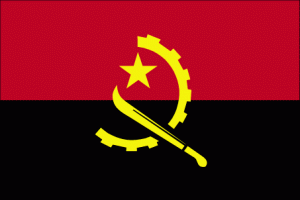 |
|
2. Cameroon
Cameroon, formally the Republic of Cameroon, is a unitary state in central and western Africa.
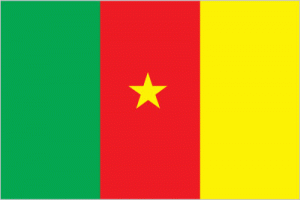 |
|
3. Chad
Chad, officially the Republic of Chad, is a state in Central Africa. It borders Libya to the north, Sudan to the east, the Central African Republic to the south, Cameroon and Nigeria to the southwest, and Niger to the west. The northern part of Chad is located in the Sahara Desert.
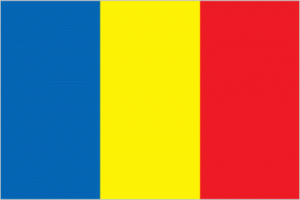 |
|
4. Gabon
Gabon, formally the Republic of Gabon, is a republic at the equator in western Central Africa. The country borders Cameroon, Congo-Brazzaville, Equatorial Guinea and the Atlantic Ocean.
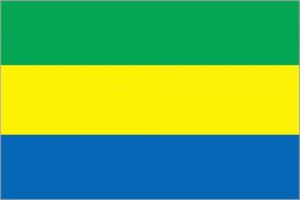 |
|
5. Equatorial Guinea
Equatorial Guinea is one of the smallest states in Africa. The country is located partly on the mainland of West Africa and partly on five inhabited islands. The country borders Cameroon and Gabon as well as the Bay of Biafra in the Atlantic.
 |
|
6. Central African Republic
The Central African Republic is a republic in central Africa located just north of the equator. The country borders Chad, Sudan, South Sudan, Congo-Kinshasa, Congo-Brazzaville and Cameroon. About 4.6 million people live in the Central African Republic.
 |
|
7. Republic of the Congo
The Republic of the Congo, often referred to as the Congo-Brazzaville (RC), is a state in Central Africa.
 |
|
8. Democratic Republic of the Congo
The Democratic Republic of the Congo (DRC), or as it is often called the Congo-Kinshasa, is a state in Central Africa. It is the second largest country in Africa in terms of area and borders in the north to Congo-Brazzaville, the Central African Republic, South Sudan, Uganda, Rwanda, Burundi, Tanzania, Zambia, Angola and a small coastal strip to the Atlantic. The Democratic Republic of Congo has the fourth largest population in Africa with just over 77 million residents.
 |
|
9. Sao Tome and Principe
 |
|
Countries in Middle Africa by Population and Their Capitals
As noted above, there are nine independent countries in the Middle Africa. Among them, the largest country is D.R. Congo and the smallest one is Sao Tome and Principe in term of population. The full list of Middle African countries with capitals is shown in the table below, ranked by latest total population.
| # | Country | Population | Land Area (km²) | Capital |
| 1 | Democratic Republic of the Congo | 86,790,567 | 2,267,048 | Kinshasa |
| 2 | Angola | 30,175,553 | 1,246,700 | Luanda |
| 3 | Cameroon | 24,348,251 | 472,710 | Yaounde |
| 4 | Chad | 15,692,969 | 1,259,200 | N’Djamena |
| 5 | Central African Republic | 5,496,011 | 622,984 | Bangui |
| 6 | Republic of the Congo | 5,380,508 | 341,500 | Brazzaville |
| 7 | Gabon | 2,172,579 | 257,667 | Libreville |
| 8 | Equatorial Guinea | 1,358,276 | 28,051 | Malabo |
| 9 | Sao Tome and Principe | 201,784 | 964 | Sao Tome |
Map of Central African Countries
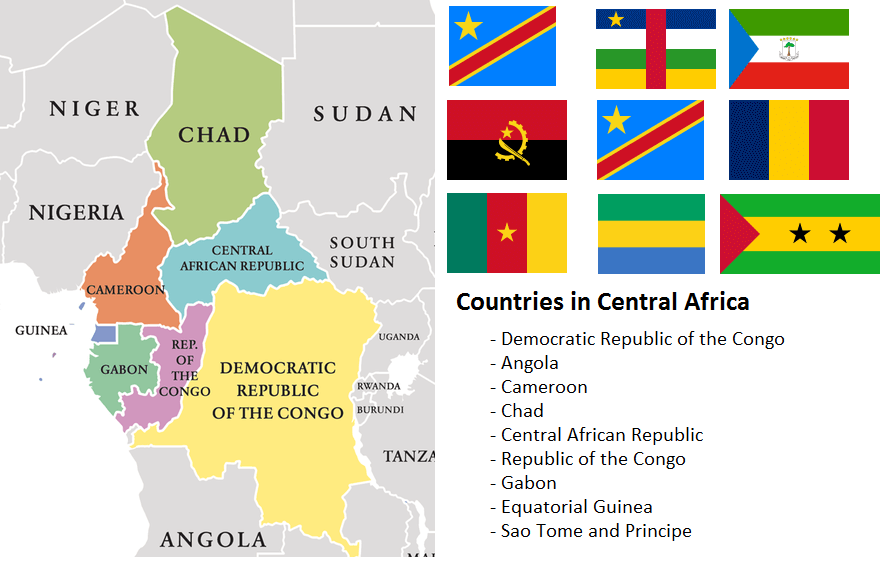
Brief History of Central Africa
Early Human Settlements
Prehistoric Era
Central Africa, rich in natural resources and biodiversity, has a deep-rooted history dating back to prehistoric times. Archaeological evidence suggests that humans have inhabited the region for thousands of years. Early human settlements were largely composed of hunter-gatherer communities. The Congo Basin, in particular, played a crucial role as a habitat for early humans. Artifacts such as stone tools and pottery found in areas like the Democratic Republic of the Congo (DRC) and Central African Republic (CAR) indicate the presence of advanced prehistoric cultures.
Development of Agriculture
The development of agriculture around 3000 BCE marked a significant shift in Central Africa’s history. The introduction of farming led to the establishment of more permanent settlements. Early agricultural societies cultivated crops such as millet and sorghum and domesticated animals. The Bantu migration, beginning around 2000 BCE, had a profound impact on the region. Bantu-speaking peoples spread across Central Africa, bringing with them agricultural practices, ironworking technology, and new social structures.
Ancient Kingdoms and Empires
Kingdom of Kongo
One of the most prominent ancient kingdoms in Central Africa was the Kingdom of Kongo. Established in the 14th century, it covered parts of present-day Angola, DRC, Republic of Congo, and Gabon. The Kongo Kingdom was highly centralized and sophisticated, with a structured government, vibrant trade networks, and a rich cultural heritage. Its capital, Mbanza Kongo, was a major urban center. The kingdom engaged in trade with European powers, particularly the Portuguese, who arrived in the 15th century. This contact had both positive and negative effects, including the spread of Christianity and the devastating impact of the transatlantic slave trade.
Luba and Lunda Empires
In the savannah regions of present-day DRC, the Luba and Lunda empires emerged between the 14th and 17th centuries. The Luba Empire, founded by King Kongolo, developed a complex political system and an economy based on agriculture, fishing, and trade. The Lunda Empire, to the south, grew out of the Luba state and expanded through alliances and conquests. Both empires played significant roles in regional trade networks, exchanging goods like ivory, copper, and salt.
European Exploration and Colonialism
Early European Contacts
European exploration of Central Africa began in the late 15th century, with Portuguese explorers venturing into the region. However, it wasn’t until the 19th century that European interest in Central Africa intensified. Explorers like David Livingstone and Henry Morton Stanley conducted extensive expeditions, mapping the region and documenting its peoples and landscapes. Their accounts fueled European ambitions for colonization.
Scramble for Africa
The Berlin Conference of 1884-1885 marked the formal partition of Africa among European powers, leading to the colonization of Central Africa. The region was divided primarily between Belgium, France, and Germany. Belgium’s King Leopold II established personal control over the Congo Free State, exploiting its resources and people with brutal efficiency. The atrocities committed during this period, including forced labor and mass killings, led to international condemnation and eventually the transfer of control to the Belgian government in 1908.
France colonized territories that would become Gabon, Congo-Brazzaville, and CAR, while Germany controlled parts of present-day Cameroon and Rwanda. The colonial period brought significant changes, including the introduction of new administrative systems, infrastructure development, and the exploitation of natural resources. However, it also led to the displacement of indigenous populations, cultural disruption, and resistance movements.
Independence Movements
Post-World War II Era
The aftermath of World War II and the global wave of decolonization fueled independence movements across Central Africa. Nationalist leaders and movements emerged, advocating for self-determination and the end of colonial rule. In the Belgian Congo, Patrice Lumumba became a prominent figure, leading the country to independence in 1960. However, the transition was marred by political instability, leading to Lumumba’s assassination and the rise of Joseph Mobutu, who established a dictatorial regime that lasted until 1997.
French and Portuguese Territories
French colonies in Central Africa also gained independence in the early 1960s. Gabon, Republic of Congo, and CAR became sovereign nations, each facing their own post-independence challenges, including political instability, coups, and economic difficulties. In the Portuguese territories, the struggle for independence was longer and more violent. Angola, for example, endured a protracted war for independence that lasted until 1975.
Post-Independence Era
Political and Economic Challenges
The post-independence era in Central Africa has been characterized by a mix of progress and persistent challenges. Many countries in the region have struggled with political instability, civil wars, and economic hardships. The DRC, for example, experienced multiple conflicts, including the First and Second Congo Wars, which involved numerous African nations and resulted in millions of deaths. Similarly, CAR has faced chronic instability, with repeated coups and ongoing armed conflicts.
Efforts Towards Stability and Development
Despite these challenges, there have been efforts to achieve stability and promote development. Regional organizations such as the Economic Community of Central African States (ECCAS) and international interventions have aimed to foster peace and cooperation. Countries like Gabon and Equatorial Guinea have utilized their oil resources to drive economic growth, although concerns about governance and equitable distribution of wealth persist.
Contemporary Issues and Future Prospects
Environmental and Social Issues
Central Africa faces significant contemporary issues, including environmental degradation, poverty, and health crises. The Congo Basin, one of the world’s largest rainforests, is under threat from deforestation and climate change, impacting biodiversity and local communities. Efforts to protect the environment and promote sustainable development are crucial for the region’s future.
Path to Sustainable Development
Looking ahead, Central Africa’s path to sustainable development involves addressing its complex challenges while capitalizing on its vast resources and resilient populations. Strengthening governance, promoting regional cooperation, and investing in education, healthcare, and infrastructure are essential steps towards a brighter future. The region’s rich cultural heritage and diverse natural landscapes offer unique opportunities for tourism and cultural exchange, contributing to its overall development.













































